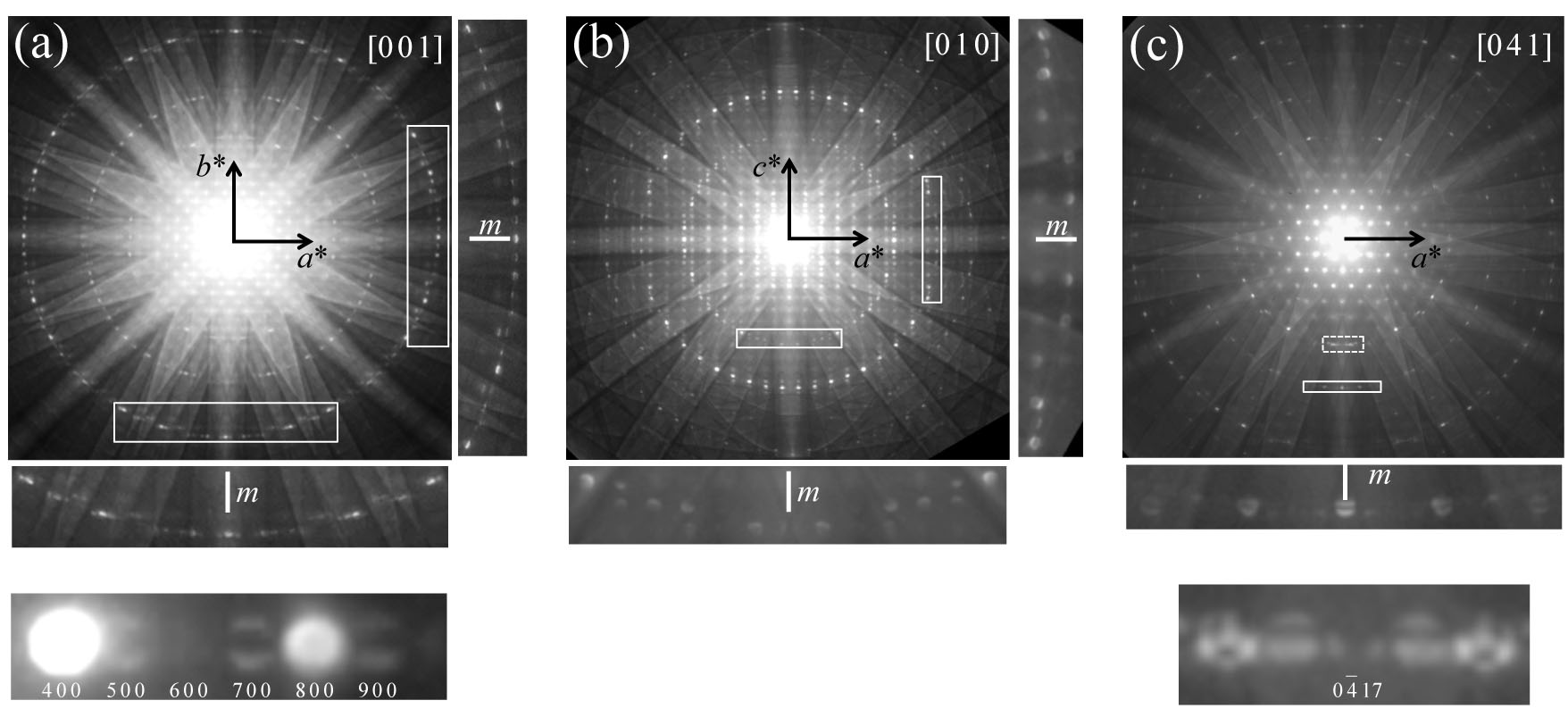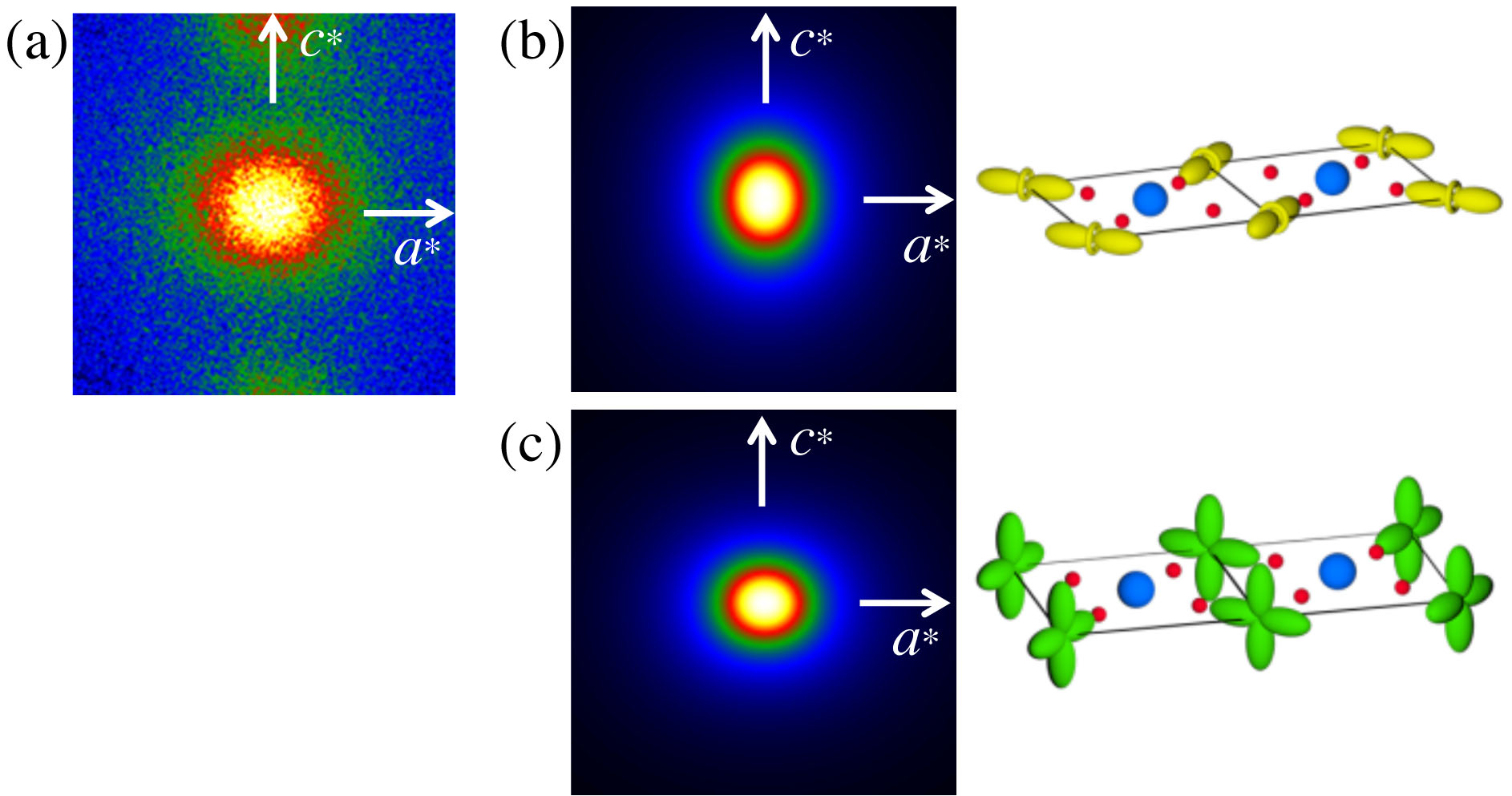IT-5-P-2570 Orbital ordering of A-site ordered SmBaMn2O6 studied by inelastic scattering accampanied by Mn-L shell excitation
Manganite perovskites have been drawing a grate attention from the unique properties such as metal-insulator transition, colossal magneto-resistance, etc. Such unique properties are attributed to a charge and orbital ordering (COO) of the 3d electrons in the eg orbitals of Manganese by resonant X-ray scattering experiments. SmBaMn2O6 shows the A-site ordering of Sm and Ba at room temperature. The crystal structure has a 2√2ap × 2√2ap ×4ap supercell with ap the fundamental cubic perovskite unit cell reported. In the present study, we determine the orbital ordering of SmBaMn2O6 by the convergent-beam electron diffraction (CBED) and inelastic scattering [3] accompanied by Mn-L shell excitation.
Samples of SmBaMn2O6 were synthesized by a solid-state reaction using Sm2O3, BaCO3, and MnO2. CBED patterns were taken from an area of about 10 nm in diameter. Inelastic scattering patterns accompanied by the Mn-L shell excitation were taken using an energy-filtering system fitted to the bottom of the electron microscope. A series of inelastic scattering patterns at successive energy losses from 620 eV to 670 eV with an energy step of 1-2 eV were taken with an energy window of 1-2 eV.
Figures 1(a), 1(b) and 1(c) show CBED patterns of SmBaMn2O6 taken at incidences in the [0 0 1], [0 1 0] and [0 4 1] orientations, respectively. The [0 0 1] and [0 1 0] patterns show two types of mirror symmetries and twofold rotation symmetry. Thus, the point group is determined to be mmm. The patterns does not show any systematic extinction rules of reflections, indicating that the lattice type is primitive P. From the dynamical extinction lines in the h00 (h = odd) reflections in the [0 0 1] pattern and 0 -4 17 reflection in the [0 4 1] pattern, the space group of SmBaMn2O6 was determined to be Pnam.
Figure 2(a) shows an inelastic scattering pattern of SmBaMn2O6 accompanied by the Mn-L shell excitation taken at an incidence in the [0 1 0] orientation. The pattern clearly shows an elongation along the a* axis. Figures 2(b) and 2(c) show inelastic scattering patterns simulated from two kinds of the orbital ordering composed of the 3z2-r2 type orbitals [1] and the x2-y2 type orbitals [2], respectively. The anisotropic feature of the experimental inelastic scattering patterns agrees well with that of the x2-y2 type model. An orbital-ordering model was constructed from the CBED symmetry and a qualitative comparison between the experimental and simulated inelastic scattering anisotropy.
References
[1] M. Uchida et al., J. Phys. Soc. Jpn. 71, (2002) 2605.
[2] M. García-Fernández, et al, Phys. Rev. B 77, 060402(R) (2008).
[3] K. Saitoh et al., J. Electron Microsc. 55 (2006) 281.; K.Saitoh et al., J. Appl. Phys. 112 (2012) 113920.
The present work was partly supported by the Grant-in-Aid for Challenging Exploratory Research (No. 23654117), the Ministry of Education, Culture, Sports, Science and Technology, Japan.

